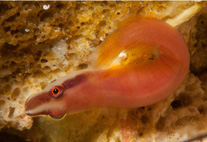Abstract
We revealed new deep-water species and cryptic speciation within freshwater sponges of the endemic family Lubomirskiidae (Porifera; Demospongiae; Spongillina) based on molecular and spicule morphology analyses of ITS and CO1 mtDNA. Lubomirskiidae contains a group of closely related species which are a dominant component of the benthos in Lake Baikal, the world's deepest and most ancient lake. Spicule morphology was similar between two Recent samples and species only known previously from fossils in Late Pliocene (3.2−2.8 mya) sediments. Despite the morphological similarity with the cosmopolitan family Spongillidae, molecular analysis of ITS sequences has reliably assigned these species to Lubomirskiidae. This not only indicates that species identification of freshwater fossil sponge spicules should be made with caution, but also suggests that the structure of megascleres may not be a reliable character for interpretations of paleoclimatic reconstructions for the Baikal region. Our results do not support the current classification of Lubomirskiidae into its morphologically defined genera and species, suggesting a strong discrepancy between molecular and morphological variation in Baikalian sponges. This present contribution is the first part of a study on the phylogenetic relationships of the Lake Baikal deep water sponge fauna.

